Introduction
Hi, In this case, we will learn about how to add cypress for e2e testing in angular and run in GitHub action every push on Github. When GitHub action runs in the project, the cypress it will be run to test angular apps. To avoid wasting time let’s start the project.
For your information in this case we don’t have a fancy user interface because the main purpose of this blog is we can use cypress as a tool for e2e testing on angular and with GitHub action.
1. Initialize Project
To start the project we can run this command
ng new angular-cypress
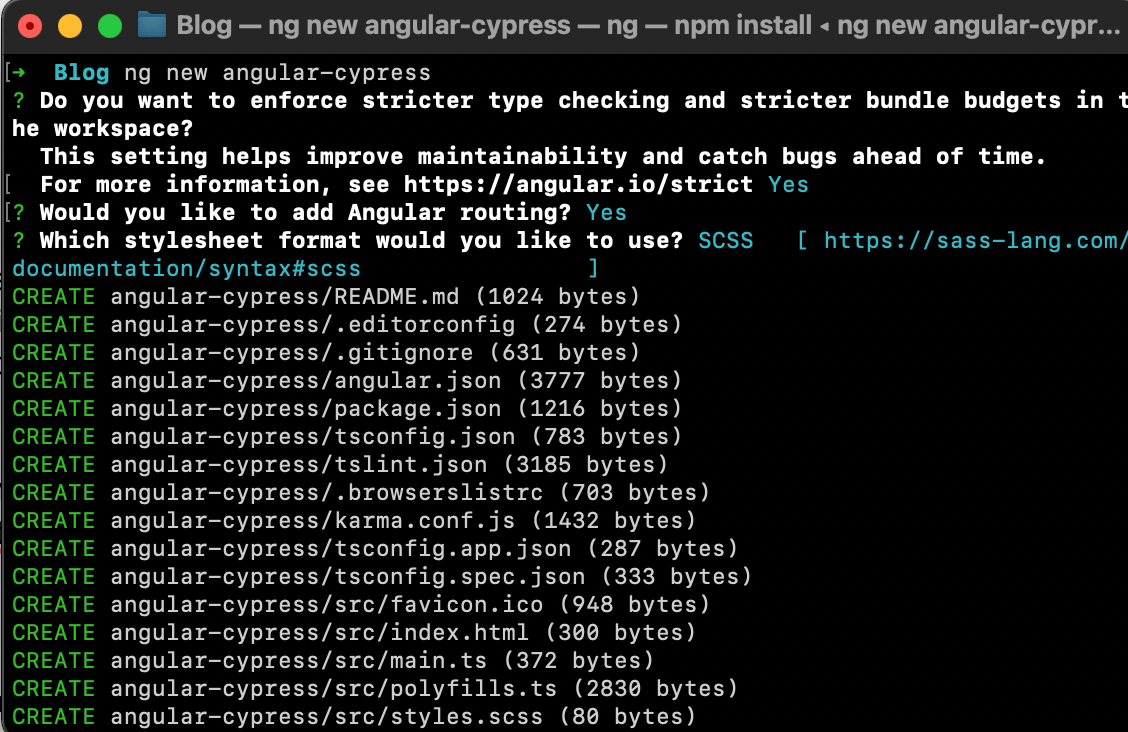
Wait a minute until the creating project is finished.
We need to check the project is not broken, so just serve the angular at the first time. We can use commands like this
ng serve
If your project is not broken, that will show like the image below

2. Adding Cypress on Project
After that, we add cypress to our project to run end-to-end testing. But the testing is not complex.
Just run this command to add cypress in project
ng add @cypress/schematics
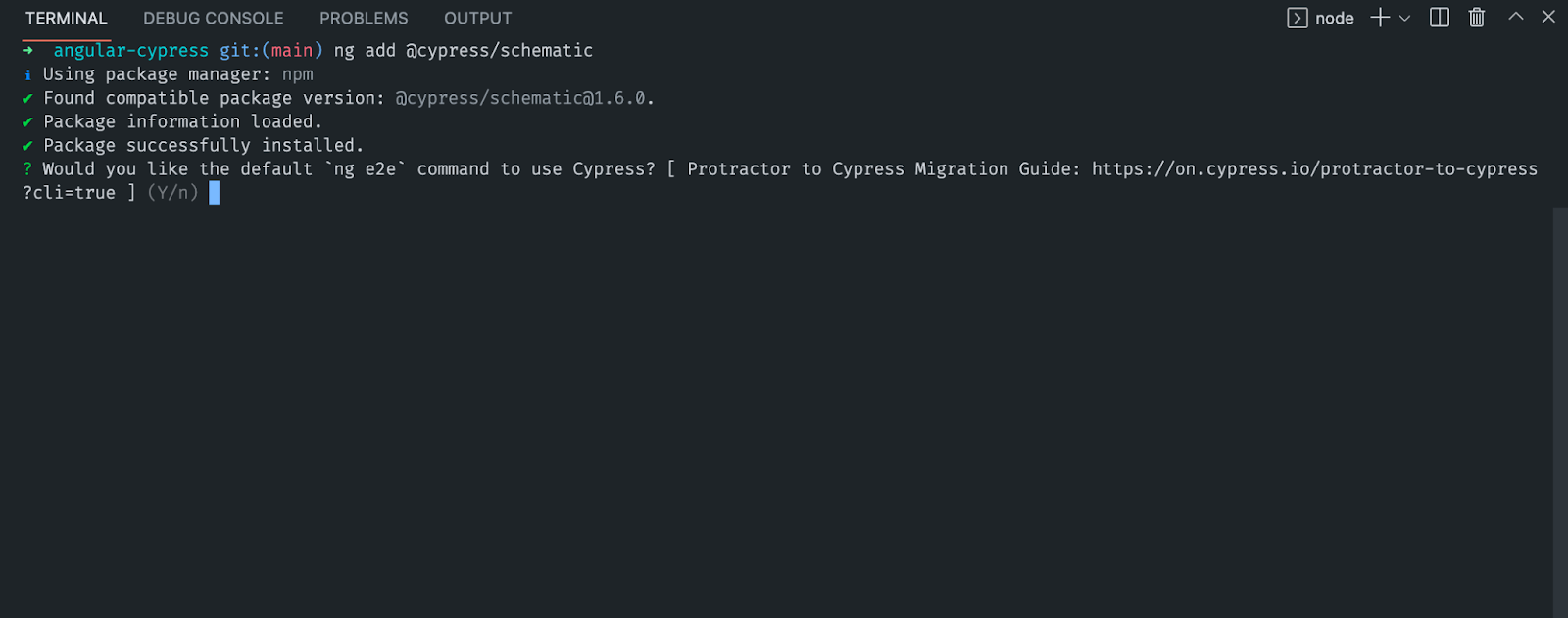
If you want to change the default testing for e2e in angular just press Y for yes. The change is from protractor to cypress.
The process of adding cypress in angular takes a while time. So just wait until the process is finished.
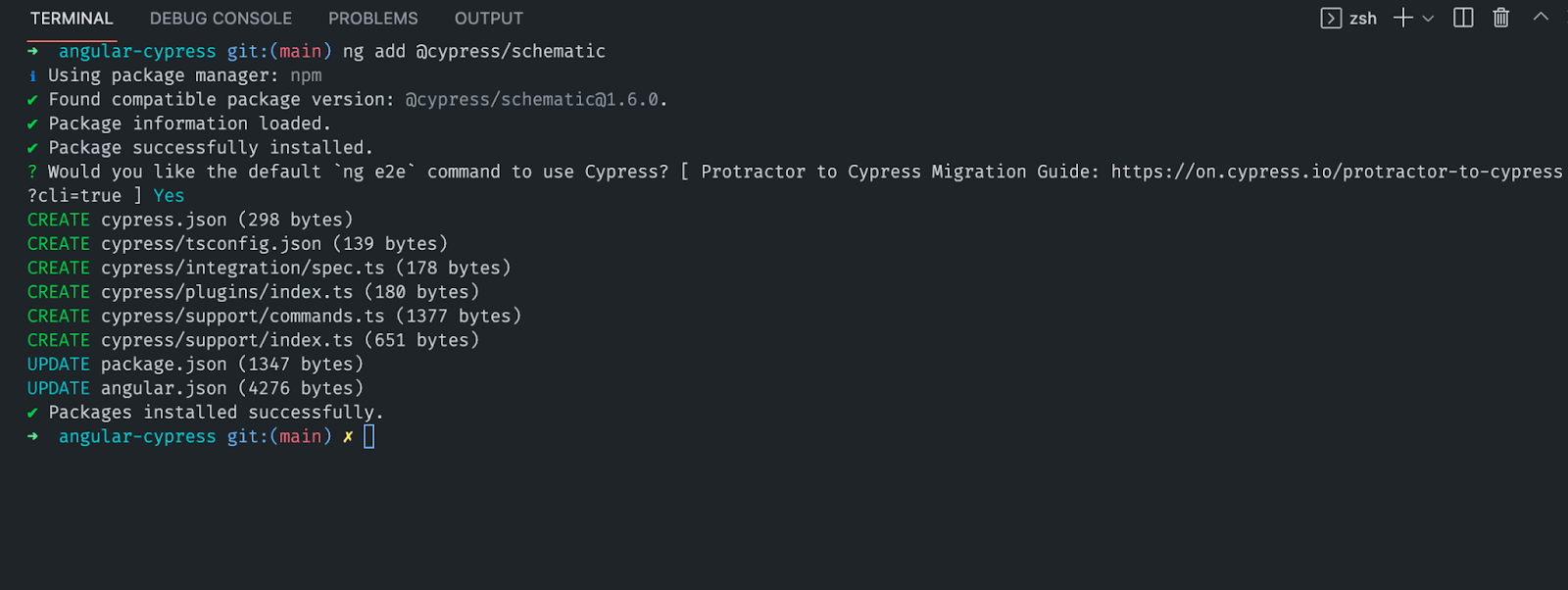
The cypress added some files and change some scripts in angular.json
3. Write E2E Testing
Create a new file on folder cypress > integrations with file name ui.spec.ts and remove the example test with filename spec.ts
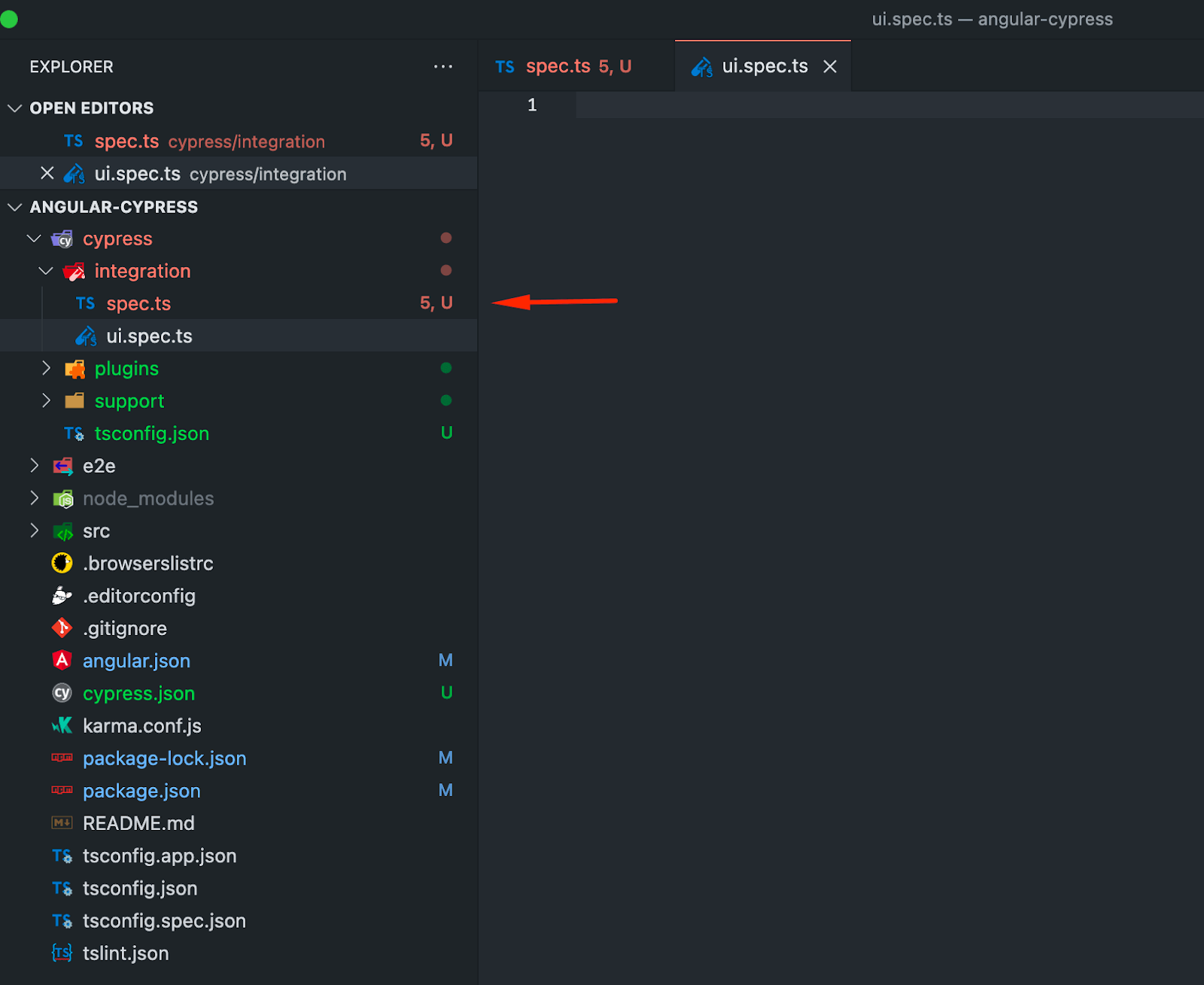
The next step is to write code for e2e testing. In this test, I just want to check the title of the project in the frame. So, let’s write code test like this in the ui.spec.ts
describe('My First Test', () => {
it('Visits the initial project page', () => {
cy.visit('/');
cy.contains('Welcome');
cy.contains('angular-cypress app is running!');
});
});
Every testing always has a main title of testing and the main title of testing have a child and it wraps on it(‘sub title’, () => ///code test ). The command visit means the cypress needs to visit on / or root and by default on cypress.json, we have config base URL on localhost:4200. The command contains means is cypress looking for every element that included that name, in this example is includes Welcome and angular-cypress app is running!
4. Run Test in Localhost
Now, time to run the test in localhost. We have two types when running the e2e test with cypress. The first type is running in the terminal or console and the second type is running on the GUI of cypress. Let’s try the first type or on the console. If you want to run the e2e test in terminal mode, just run npm run cypress:run and make sure the project was run on localhost:4200.

The left side of the terminal is the command to run project with ng serve and right side of the terminal is the command to run the test in the terminal with npm run cypress:run
Let’s try the second type is GUI of cypress. Just run npm run cypress:open and automatically will show this interface.
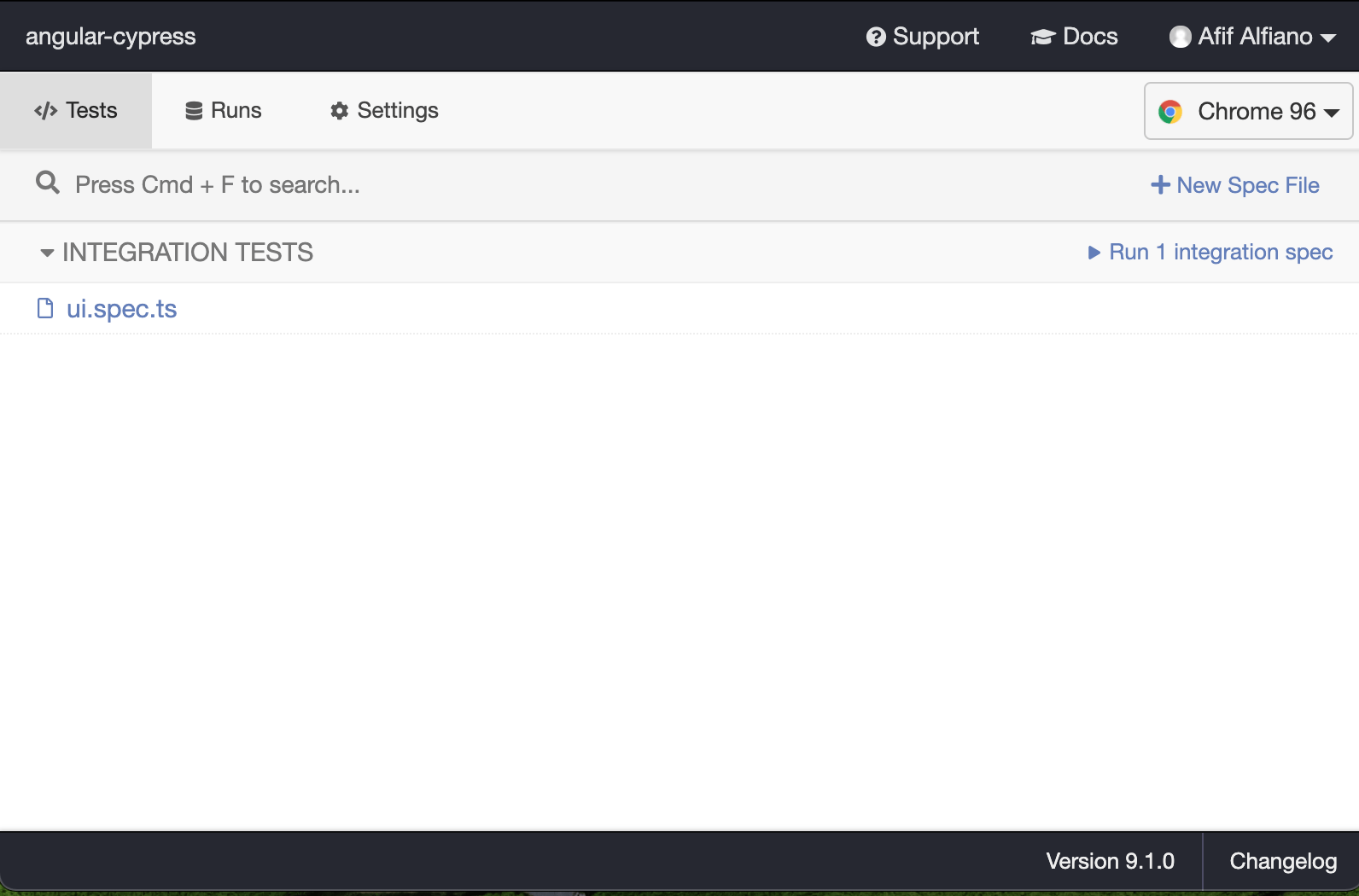
Just click the Run 1 integration spec and the result of testing on the GUI of cypress is like this.
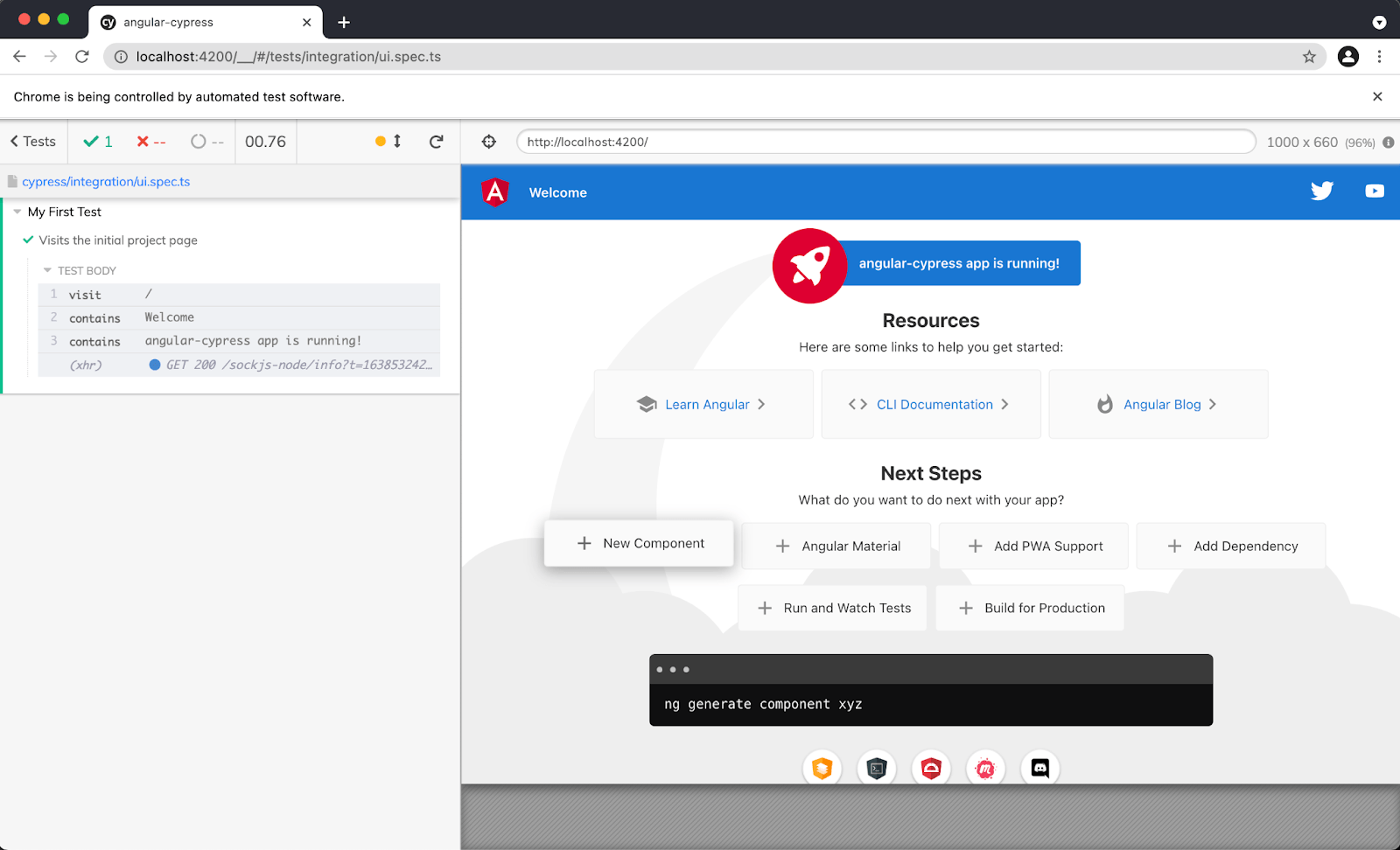
The one feature of cypress that I like is we can time travel on every step on e2e testing. If we hover the mouse in the contains Welcome, the interface it will show like this.

See? We can identify where is the element’s location.
5. Config Github Action
Create file github-action.yaml in folder .github/workflows. If on your project the folder doesn’t exist, just create the new folder.

After that at this config YAML to run cypress in GitHub action. Here is the code of github-action.yaml
name: angular-cypress
on: [push]
jobs:
cypress-run:
runs-on: ubuntu-latest
steps:
- name: Checkout
uses: actions/checkout@v2
# Install NPM dependencies, cache them correctly
# and run all Cypress tests
- name: Cypress run
uses: cypress-io/github-action@v2
with:
record: true
build: npm run build
start: npm start
wait-on: 'http://localhost:4200'
config: baseUrl=http://localhost:4200
env:
# pass the Dashboard record key as an environment variable
CYPRESS_RECORD_KEY: ${{ secrets.CYPRESS_RECORD_KEY }}
# pass the project ID from the secrets through environment variable
CYPRESS_PROJECT_ID: ${{ secrets.PROJECT_ID }}
After that, we create a new repository on Github and push this project. Make sure the name of the repository is the same as a project, for example, this project name is angular-cypress, so I create a new repository with the name angular-cypress too. Just git add the project, then git commit, and git push the project.
Because we need project id and record id from cypress. We should create an account at there and create a new project like this. Visit https://dashboard.cypress.io/login . You can log in with account Gmail or GitHub and after that create an organization for the project and just click create a new project.
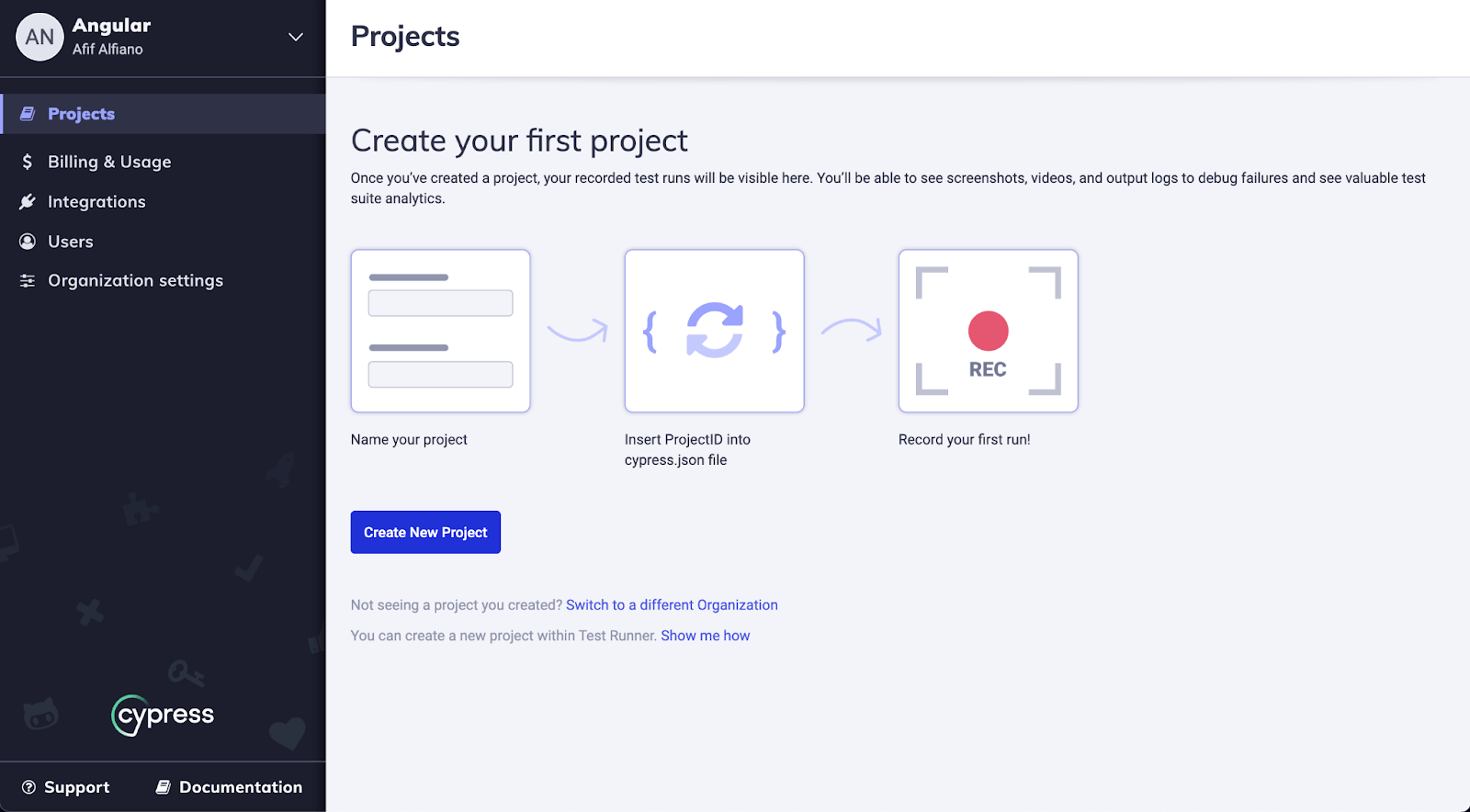
Give a project name like this and the CI provider choose Github Action

After that copy the project id and record id like this
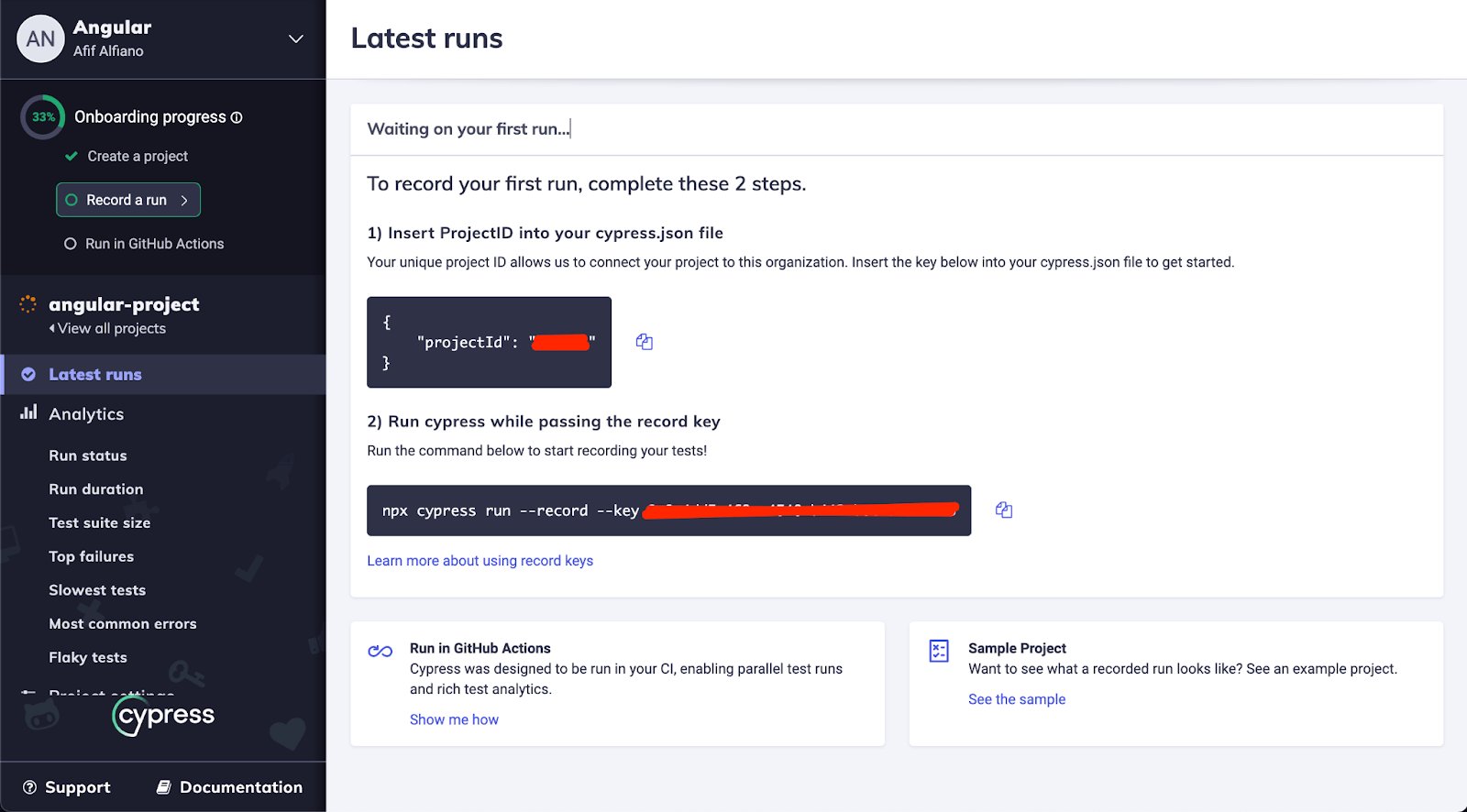
The projectId copy on file cypress.json

Then the script of the record key copy on package.json

To integrate our project and the dashboard cypress just run the npm run cypress:record.

Wallaa!!!, The testing of a project runs on dashboard cypress.
After that git add, commit and push your changes project on your repository Github.
Visit the repository on GitHub and click on tab action.
Click on the build: add github action that still running and the detail show is like this.
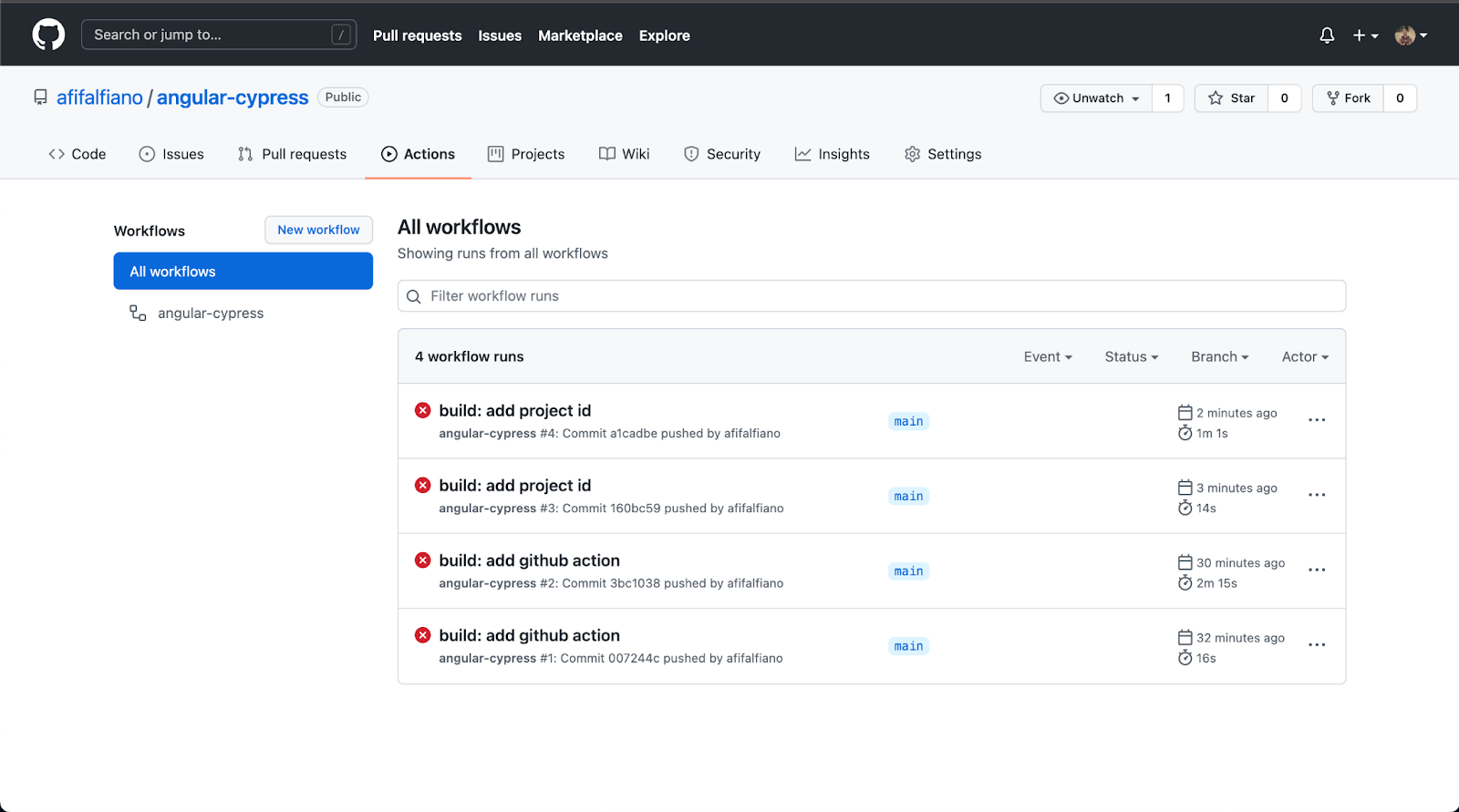
Oh nooo! The testing is getting an error

We need to add the Cypress record key on the environment variable at Github.
6. Add Github Env Variable
On the repository project just click on tab settings
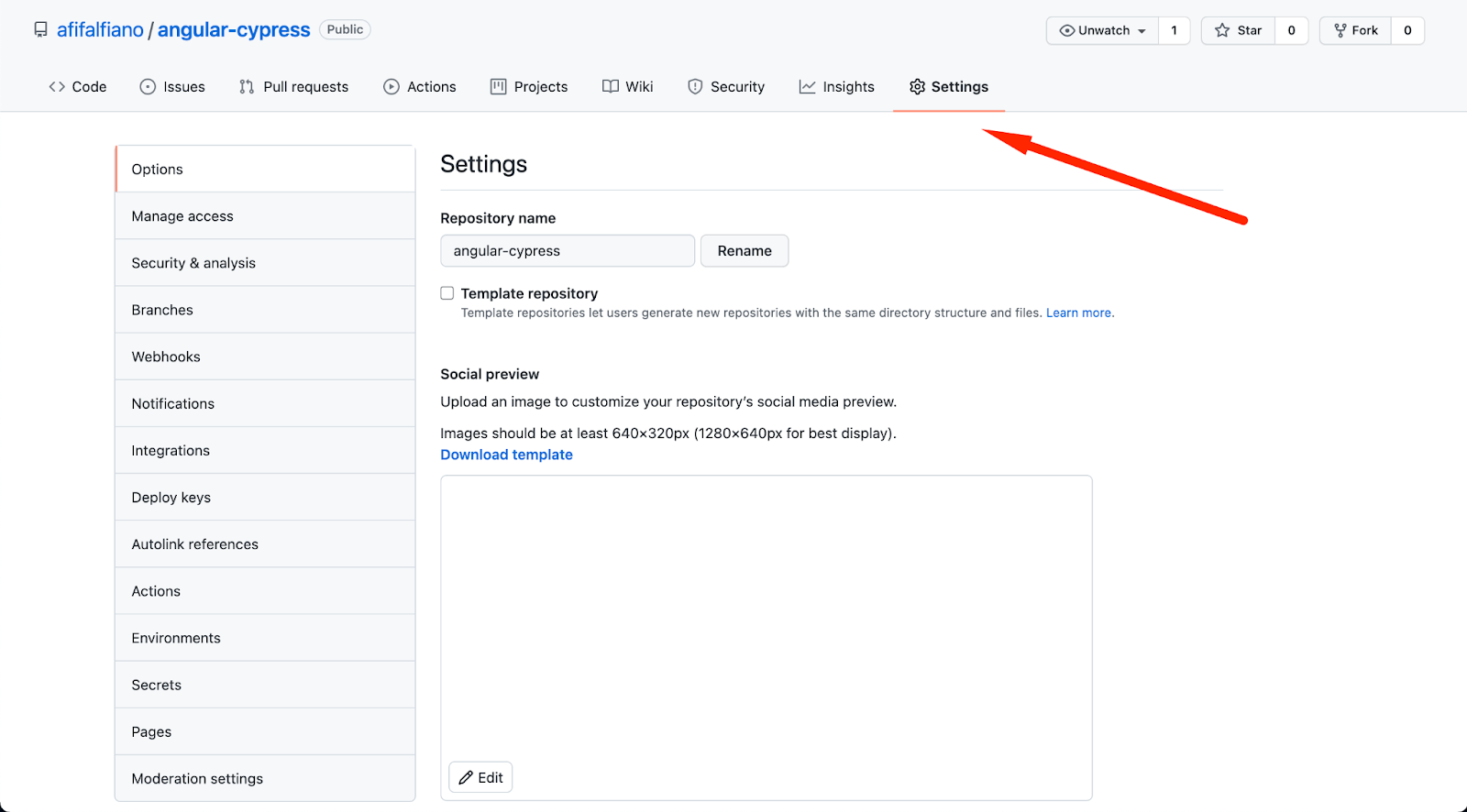
Then go to secrets.
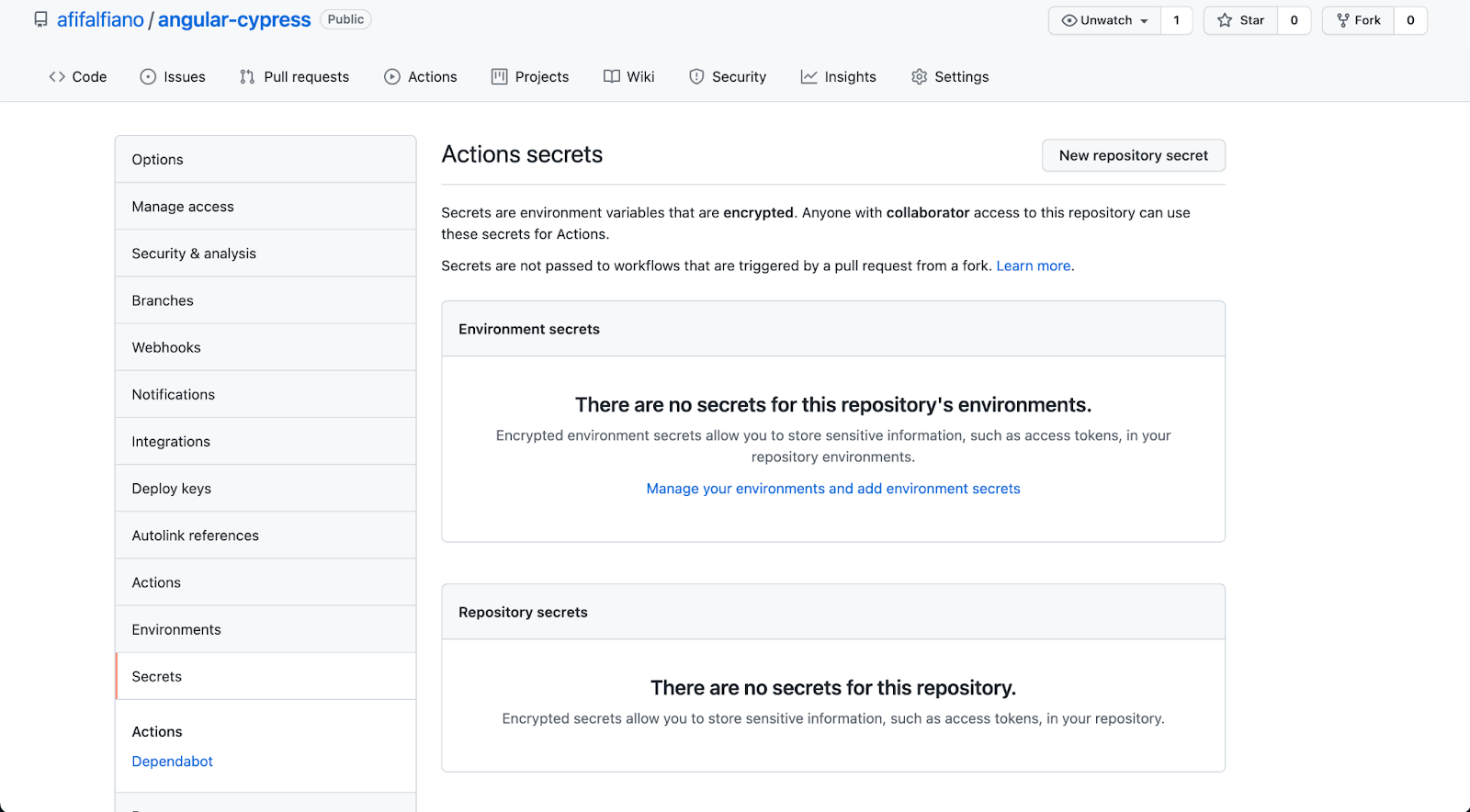
Click create a new repository secret.
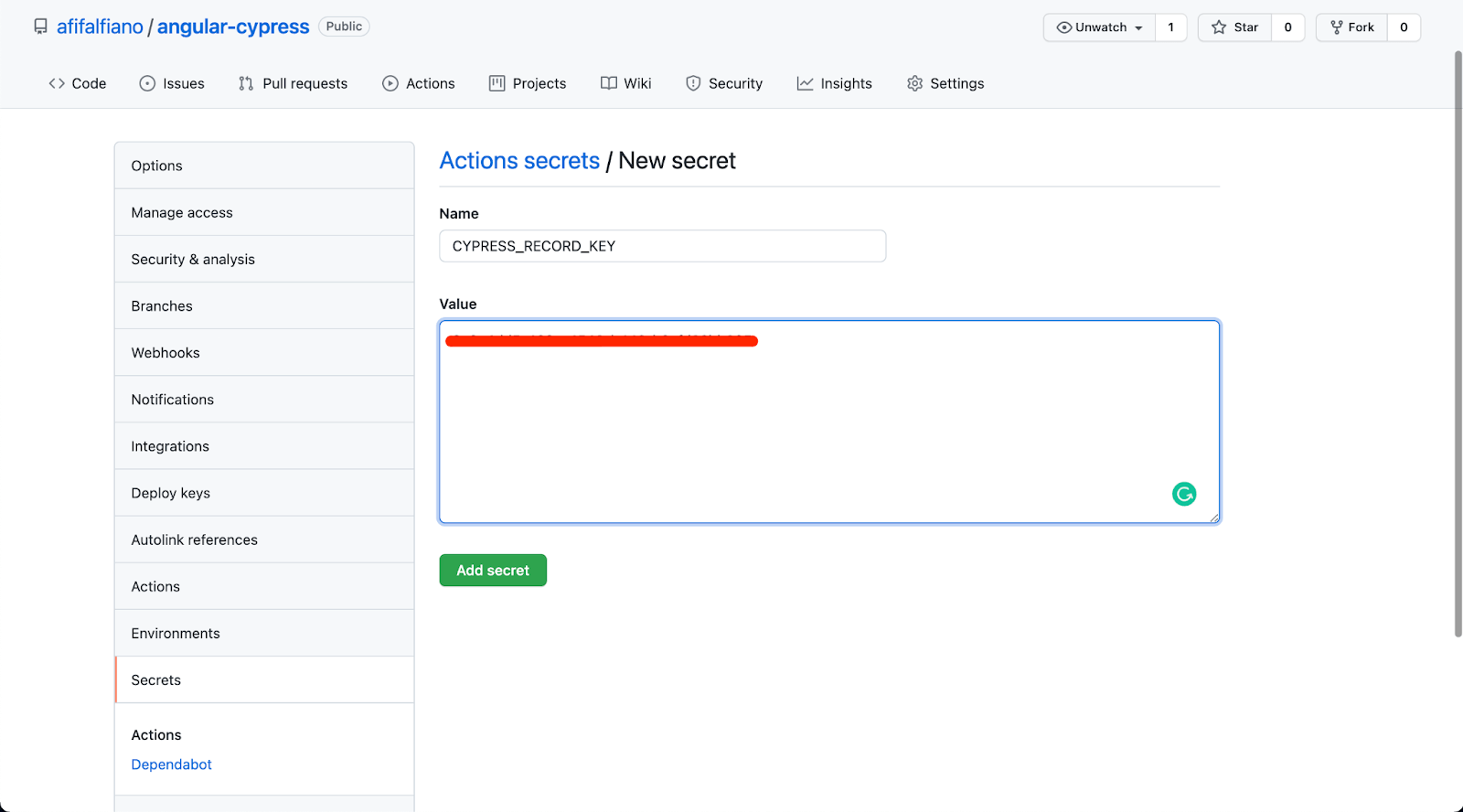
Add the name of the secret is CYPRESS_RECORD_KEY and paste the key record on the field value.

Back in the tab Action and click on the build was failed.
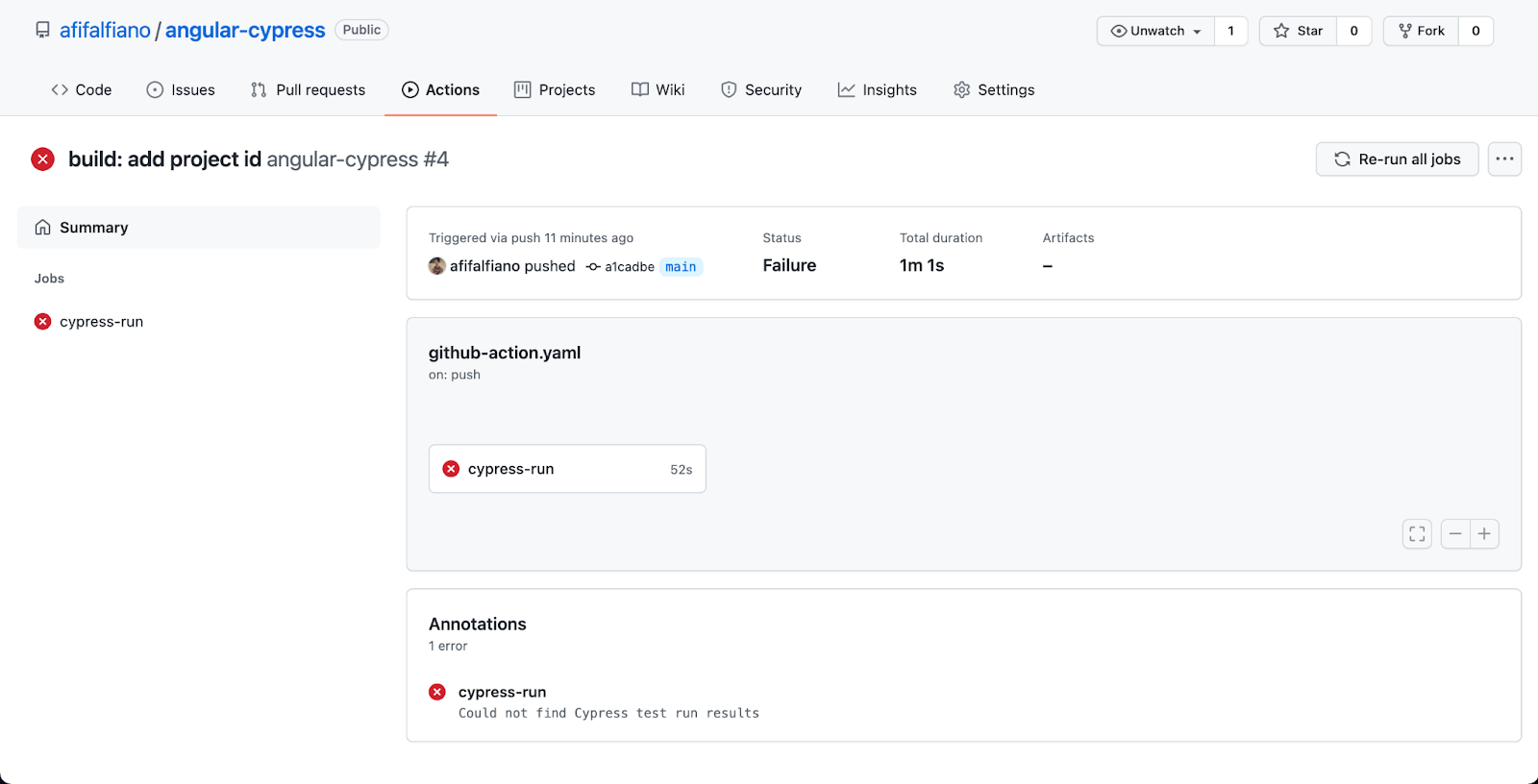
Click on the re-run all jobs at the top left.
Just waiting at the moment
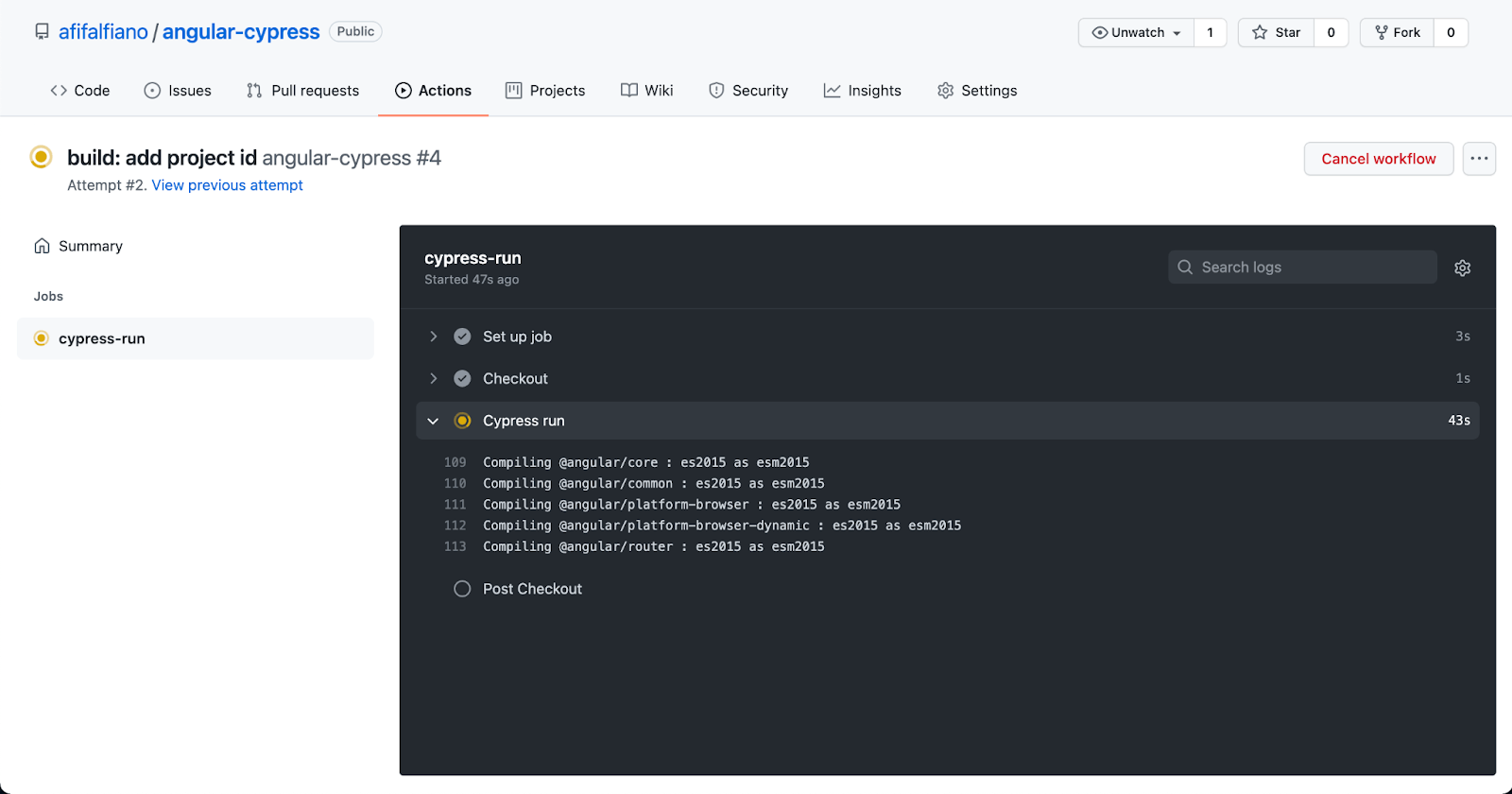
Yap the testing has completed without error

For your information, we can check the result of the test in dashboard.cypress.
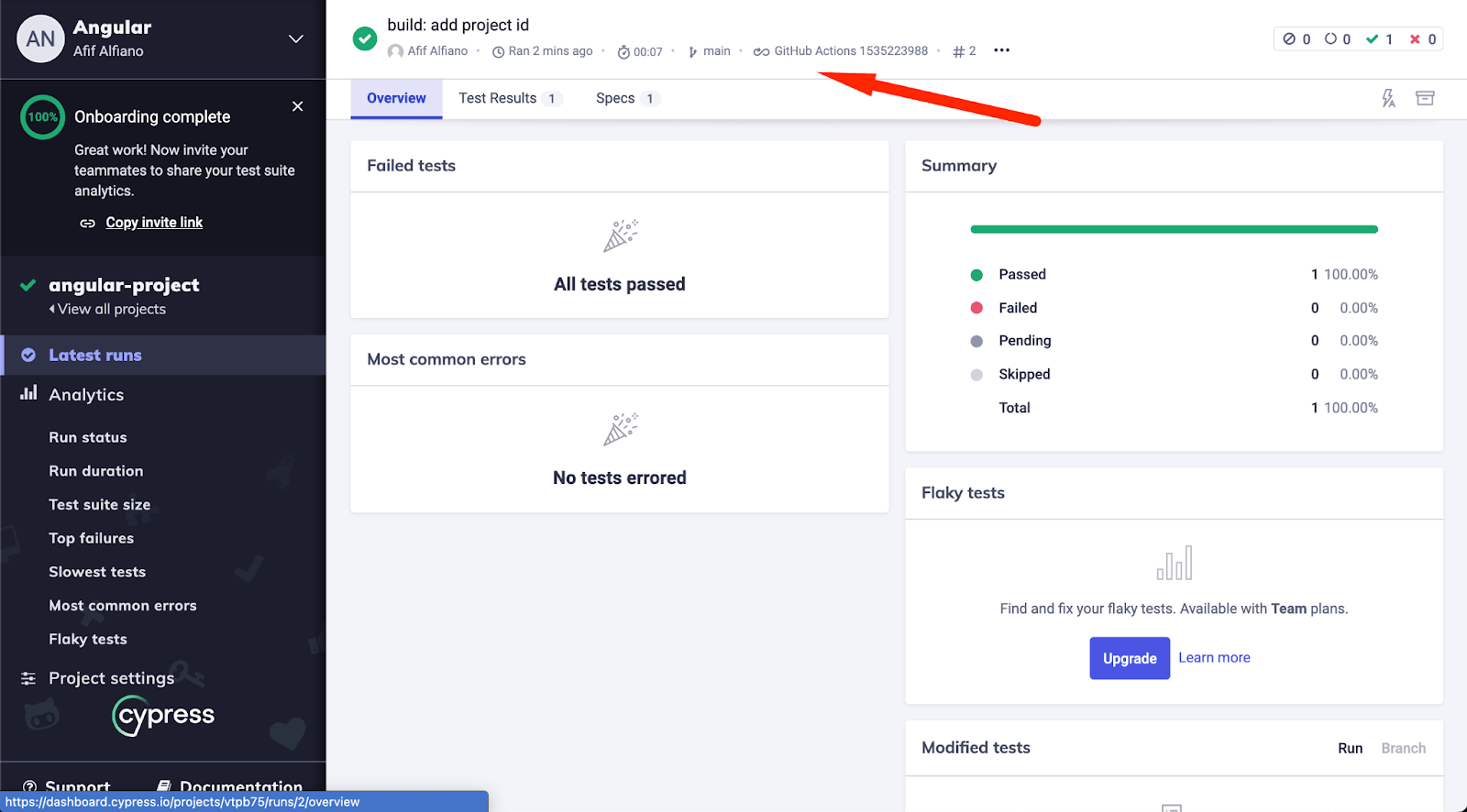
Yap, the result of the test from GitHub action. So the integration is successful.
This is my project on GitHub :
I think that is enough for me and hopefully useful for all of you guys. Thank you.
#Tutorial #Angular #Cypress #E2E #Testing
